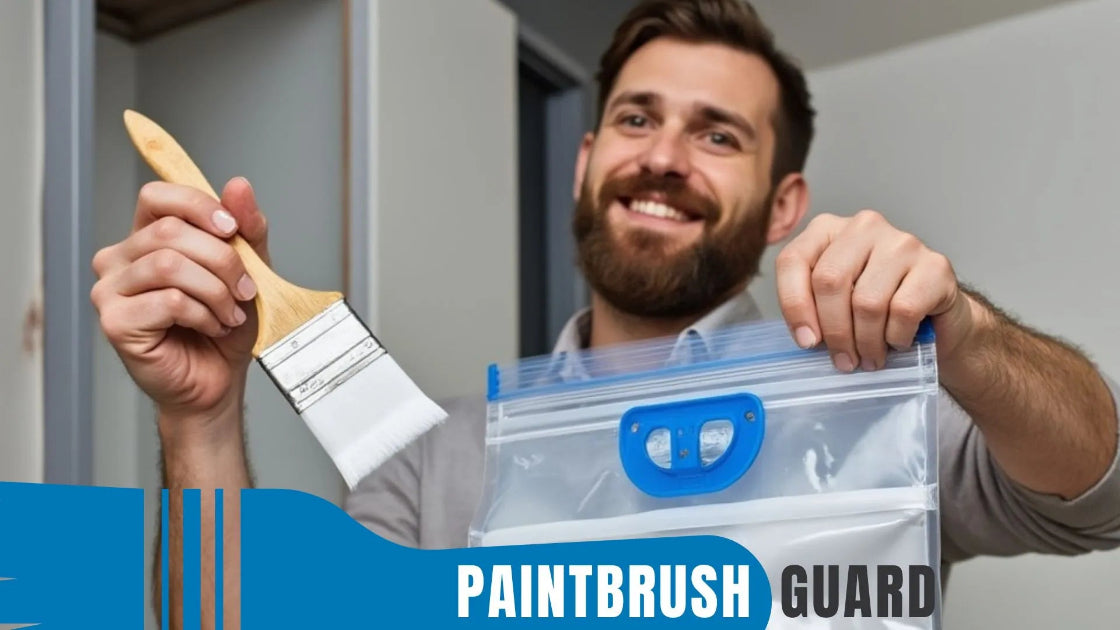
Painting Interior Ceilings: Ultimate 7 Step Beginner Guide
|
Time to read 12 min
|
Time to read 12 min
Painting interior ceilings can transform any room, adding brightness, warmth, or a bold design statement. Often called the "fifth wall," a freshly painted ceiling enhances a space’s aesthetic while covering imperfections like stains or cracks.
For beginners, painting interior ceilings might seem challenging, but with the right tools, techniques, and preparation, anyone can achieve a professional-quality finish.
This comprehensive 7-step guide to painting interior ceilings is designed to help you navigate the process with ease, ensuring flawless results.
We’ll also recommend top products to make your project a success.
If you are planning to paint your house interior, in this article you will learn easy steps to make your home interior feel new again with step-by-step guides for all interior surfaces.
Painting interior ceilings is more than a maintenance task; it’s an opportunity to elevate your home’s ambiance.
A fresh coat of paint can brighten a dark room, make a small space feel larger, or add a pop of color to create a cozy atmosphere.
Industry experts suggest painting interior ceilings first to avoid drips or splatters on freshly painted walls, making it a critical step in any room renovation.
Whether you’re refreshing a bedroom, living room, or kitchen, painting interior ceilings requires careful planning and execution to avoid streaks or uneven coverage.
This guide breaks down the process into seven manageable steps, tailored for beginners. We’ll cover everything from preparation to the final coat, ensuring you have the knowledge and confidence to tackle painting interior ceilings like a pro.
Painting interior walls? Our 10-step beginner guide with product recommendations ensures a flawless, professional finish for any room.
Before starting your painting interior ceilings project, gather all necessary tools and materials. Having everything on hand prevents interruptions and ensures a smooth workflow.
With no cleanup required after a painting session, you can take a short break mid-project or wrap up your painting for the day, your brush stays ready without the need to clean.
While classic white Prestine paint is a popular choice for brightening rooms. Here are some ideas inspired by top design trends:
Pro Tip: Test paint samples on a small ceiling section to see how the color looks under your room’s lighting before committing.
Learn to clean, prime, and paint trim with eco friendly paint for neat, crisp lines. Get sustainable painting tips to make window and door frames pop with this step-by-step guide.
Proper preparation is crucial for painting interior ceilings successfully. A well-prepped room protects your furniture and floors while ensuring the paint adheres properly.
1. Clear the Room: Remove all furniture, if possible. For items too large to move, cover them with canvas drop cloths, overlapping by at least 12 inches for full protection.
2. Protect Fixtures: Turn off power at the breaker and remove ceiling fixtures like lights or fans. Store hardware in plastic bags. Cover remaining fixtures with painter’s tape.
3. Cover Floors and Walls: Lay canvas drop cloths on the floor and tape them to baseboards. If you’re not painting the walls, apply painter’s tape along the ceiling edges to prevent drips.
4. Protect Walls: If not painting the walls, apply painter's tape along the ceiling edge.
5. Safety First: Wear safety goggles and a hat to protect against splatter. If your home was built before 1978, test for lead paint to avoid hazardous dust.
Pro Tip: Double-check that all surfaces are covered to avoid accidental paint splatter when painting interior ceilings.
Learn how to prep, prime, and paint doors with eco friendly paint for a strong, pretty finish. Discover sustainable painting tricks for smooth, drip-free doors in this step-by-step guide.
A clean, smooth ceiling ensures better paint adhesion and a flawless finish. This step is critical for painting interior ceilings, especially if dealing with stains, cracks, or textured surfaces.
1. Clean the Ceiling: Use a long-handled duster or a soft brush attachment on a vacuum to remove dust and cobwebs. For textured ceilings, be gentle to avoid damaging the texture. Wash with a mild detergent solution or sugar soap to remove grime.
2. Patch Cracks and Holes: Apply joint compound to small cracks or nail pops with a putty knife. For larger cracks, use self-adhesive fiberglass mesh tape before applying compound. Sand smooth with 220-grit sandpaper once dry.
3. Sand Imperfections: For smooth ceilings, lightly sand with 100-grit sandpaper using a sanding pole to create a uniform surface. Wipe with a damp sponge to remove dust.
Pro Tip: For stubborn stains, spot-prime rather than coating the entire ceiling to save time and materials.
Find out how to clean, sand, and paint cabinets with eco friendly paint for a tough, new look. Get sustainable painting tips for a smooth finish in this step-by-step guide.
Priming is essential for painting interior ceilings with stains, dark colors, or textured surfaces. Prestine Waterborne Ceiling Paint often eliminates the need for a separate primer on undamaged surfaces, but certain scenarios require it.
1. Use a roller with the appropriate nap (low for smooth, thicker for textured).
2. Apply in 4x4-foot sections, keeping a wet edge to avoid lap marks.
3. Allow the primer to dry completely before painting.
Pro Tip: Check the ceiling after priming to ensure stains are fully covered before applying Prestine paint.
Learn how to prep, prime, and paint baseboards with eco friendly paint for clean room edges. Find sustainable painting tricks for a neat finish in this step-by-step guide.
Cutting in is the process of painting the edges where the ceiling meets the walls or fixtures, ensuring clean lines and full coverage. This step is critical for painting interior ceilings with a professional finish.
Pro Tip: Keep your brush wet to avoid drag marks, which can ruin the smooth finish of painting interior ceilings.
Learn how to prep, prime, and paint baseboards with eco friendly paint for clean room edges. Find sustainable painting tricks for a neat finish in this step-by-step guide.
Rolling is the most efficient way to cover large areas when painting interior ceilings. Using Prestine paint and the right technique ensures even coverage and minimizes splatter.
Pro Tip: For vaulted or tray ceilings, start at the highest point and work downward, using an extra-long extension pole for safety and ease.
Learn how to prep, prime, and paint with eco friendly paint for a bold, pretty wall. Get sustainable painting tips for a standout feature with this step-by-step guide.
Most ceilings require one coat of paint, but a second coat may be needed for full coverage, especially on textured surfaces or when changing colors.
Pro Tip: Touch up within a few hours of painting to ensure seamless blending, especially when painting interior ceilings with bold colors.
Pro Tip: Take your time with each step to ensure a smooth, professional result when painting interior ceilings.
Find interior and exterior house painting guides and innovative tools to help you with your house painting project.
By following this 7-step beginner guide, gathering tools, preparing the room, cleaning and repairing the ceiling, priming, cutting in, rolling, and touching up, you’ll achieve a flawless finish.
Avoid common mistakes, experiment with bold colors, and enjoy the process of refreshing your space.
With the right approach, your ceiling will become a stunning focal point in any room.
You’ll need a 9-inch roller and extension pole (e.g., 6FT Paint Roller Brush kit), a 2-inch angled brush (e.g., Purdy Angular Paint Brush), painter’s tape (e.g., ScotchBlue Original Multi-Surface Painters Tape), canvas drop cloths (e.g., CCS Canvas Drop Cloth), a 6-foot step ladder (e.g., HBTower Step Ladder), a paint tray with liners (e.g., 1 Piece 9 Inch Metal Paint Tray with 10 Tray Liners), a spackle knife set (e.g., 4Pcs Spackle Knife Set), spackling (e.g., DAP DryDex Spackling), a sanding pole with 100-grit sandpaper (e.g., Sander Tool with Extendable Pole), safety gear (e.g., 3M Particulate Respirator), and paint (e.g., PRESTIGE Interior Ceiling Paint) with optional primer (e.g., Rust-Oleum Primer/Sealer).
Clear the room of furniture or cover large items with canvas drop cloths (overlapping by 12 inches). Turn off power and remove or cover ceiling fixtures with painter’s tape. Lay drop cloths on the floor and tape them to baseboards. Apply painter’s tape along ceiling edges if not painting walls. Wear safety goggles, a hat, and a dust mask, and test for lead paint if your home was built before 1978.
Priming is necessary for stained ceilings, dramatic color changes, glossy surfaces, or textured ceilings to ensure better adhesion and coverage. Use Primer for stains, color shifts, or a bonding primer for glossy surfaces. It’s often unnecessary with Prestine paint’s self-priming formula on undamaged ceilings. Apply with a roller in 4x4-foot sections, keeping a wet edge, and let it dry fully before painting.
Use a quality 2-inch angled brush (e.g., Purdy Angular Paint Brush) dipped in Prestine paint, removing excess to avoid drips. Hold the brush parallel to the wall, painting a 2-3-foot line about 1/2-inch from the edge in one smooth motion. Blend closer to the corner in small sections, maintaining a wet edge to ensure even coverage without buildup.
Moisten the roller, dip it into Prestine paint, and roll off excess. Start in a corner, rolling in 4x4-foot sections with an “M” pattern for uniform coverage, then back-roll lightly to smooth heavy areas. Maintain a wet edge by working from dry to wet areas, rolling slowly to reduce splatter. Use a low-nap roller for smooth ceilings or 1/2-inch to 3/4-inch nap for textured ones, and attach an extension pole for high areas.
Discover why paint ceiling before walls: Expert tips to avoid drips, splatter and mistakes in room renovations. Step-by-step guide for flawless results!

Learn about eco-friendly painting, tips and tutorials on house interior and exterior surfaces, so you can get started with your project without any surprices during or after your painting.

Learn how interior house paint colors influence mood with expert tips on room preference so you can pick the best colors for a harmonious home environment.
We focus on the most popular shades for each interior colors, so you don't miss no matter what color you pick.

Learn how this innovative tool allows you to store paintbrushes without the need for immediate cleaning, offering significant advantages in time savings, water conservation, reduced chemical pollution, and lower costs for supplies.








